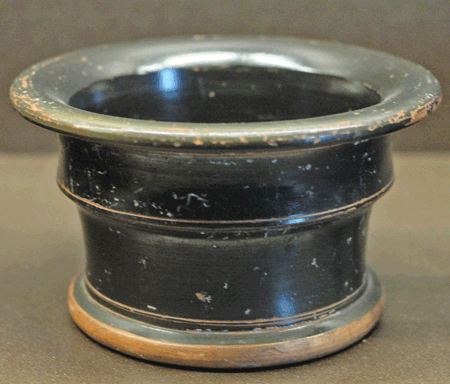
Daphne had set the table for eight. She used her finest Limoges china with a tiny rose pattern. This New Year’s supper was to be served using her best linen tablecloth that she had purchased at the Belfast Linen Mills. The crystal goblets were of the Achilles pattern and had been washed by hand so as not to damage the precious crystal.
Once her table was complete, she placed the name place cards so that each guest would have a fine conversational partner. No couple was seated together as was the custom of the day. She knew they would arrive on time dressed in their best clothing. Both men and women would wear hats of the latest fashion and buttoned gloves. It was, after all, an occasion to welcome in the new year, 1941, with a tasty meal among old friends.

Wikipedia photo
And, oh, what a meal it was! Beef Wellington was the star of the show and that dish was accompanied by roasted potatoes, broccoli with a cheese gravy, Waldorf salad, deviled eggs, and several desserts. Her cook had been busy all week baking the desserts which included chocolate cake with raspberries, macaroons, fruitcakes, and ice creams. No one would leave hungry, Daphne was certain.
The last touch to her table was to place the salt cellars at each place. She had collected a variety of them over the years of marriage. She liked them all. Each one was a different shape and made variously of glass or ceramic, ivory, or wood. The flowers would arrive by messenger just a few hours prior to the guest’s arrival. She had ordered tiny bouquets of white and pink roses to be placed about the dining room.
Greek artifacts from the classical period in the shape of small bowls were called salt cellars. The Romans had the salinum, a receptacle made of silver and regarded as essential in every household. During the Middle Ages elaborate master salt cellars evolved. This large receptacle was a sign of status and prosperity. The social status of guests could be measured by their positions relative to the master’s large salt cellar. High-ranking guests were seated above the salt while those of lesser importance sat below the salt.
King Francis I paid the 16th Century Florentine goldsmith and sculptor Benvenuto Cellini 1,000 gold crowns to make a salt cellar that would announce the French king’s position as Europe’s grandest monarch. In gold and enamel, Cellini rendered Aphrodite and Neptune in languid recline. The salt dish, where their knees were touching, symbolized the fertile union of earth and sea. On Francis’s payroll was Leonardo da Vinci, who used the salt cellar to point out the ignoble. In his painting, The Last Supper, the artist showed an overturned saltcellar in front of Judas as a symbol of bad faith.
During the Renaissance and Baroque periods, smaller salt cellars remained in place and by 1588 the smaller salt cellars had salt spoons. With the Industrial Revolution both salt and salt cellars were commonplace.
The pressed glass manufacture became an industry and thrived. Salt cellars were easy to mold and affordable. Salt shakers began to appear in the Victorian era. Patents show attempts to deal with the issue of salt clumping, but they remained the exception rather than the norm. Salt shakers gained favor and the use of salt cellars were not used as frequently.
Salt cellars made of silver, glass, china, pewter, and stoneware have been collected for centuries. By the late 1930s, salt cellars had become a quaint way to offer salt to guests. They had become a collectable. In the 1960s France, the Ratilly ceramic salt cellar was the epitome of elegant chic.
The mantle clock chimed the hour of 6 p.m. Both Daphne and her husband, Ralph, were dressed and awaited their guests. When everyone had arrived and were seated, the white candles were lighted and the meal was served. It was a refreshing two hours that they lingered over the food and wines. Toasts were spoken and a jolly mood prevailed as they welcomed in the new year with high spirits and high hopes.

